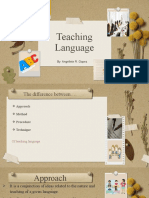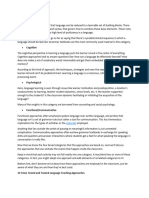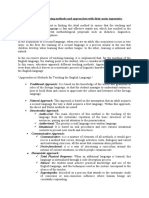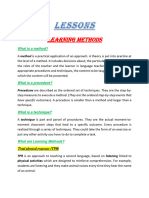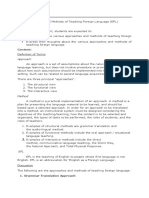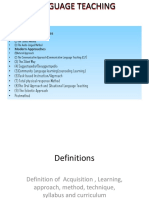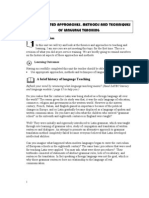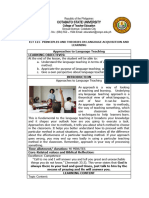Approaches and Methods in Language Learning
Language learning is a complex process that involves various approaches and methods. These
approaches and methods have evolved over time, reflecting different theories about how
language is learned. Here are some of the most common ones:
Traditional Approaches
Grammar-Translation Method: This method emphasizes grammar rules and
vocabulary acquisition. Learners are expected to translate sentences from one language to
another.
Audio-lingual Method: This method focuses on oral language skills through drills and
repetition. Learners are expected to imitate native-speaker pronunciation and intonation.
Communicative Approaches
Communicative Language Teaching (CLT): CLT emphasizes meaningful
communication and interaction. Learners are encouraged to use language in real-life
contexts and to develop communicative competence.
Task-Based Language Teaching (TBLT): TBLT focuses on completing meaningful
tasks that involve language use. Learners are expected to use language to solve problems
and achieve goals.
Other Approaches
Natural Approach: This approach emphasizes immersion in the target language and
natural language acquisition. Learners are exposed to the language in a meaningful
context and are allowed to acquire language naturally.
Lexical Approach: This approach focuses on vocabulary acquisition and the role of
lexical chunks in language learning. Learners are expected to learn and use common
lexical phrases and collocations.
Methods within Approaches
Direct Method: This method emphasizes using the target language exclusively in the
classroom. Learners are expected to learn through exposure and imitation.
Indirect Method: This method emphasizes using the learner's native language to explain
grammar rules and vocabulary.
It's important to note that no single approach or method is universally effective. The best
approach for a particular learner depends on various factors, including their learning style, goals,
and the specific language being learned. Many teachers and language learners combine elements
of different approaches and methods to create a personalized learning experience.
Would you like to know more about a specific approach or method?
